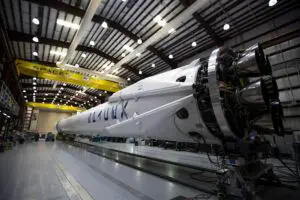
Table of contents
In this article discover…
The UK defence sector is entering a critical phase. Rising government defence spending, a shake-up in procurement, and a sharper focus on new technologies, like AI and quantum, are reshaping the sector.
The government’s June 2025 Modern Industrial Strategy set out an ambition for the UK to become a global defence superpower. Government defence spending will rise to 2.6% of GDP by 2027, with an ambition to reach 3% in the next Parliament. These commitments are already shaping technology priorities, market dynamics, and the UK’s response to global security pressures.
Technological priorities
The strategy defines clear technological priorities. Five core subsectors stand out:
- Drones and autonomous systems draw on UK strengths in robotics, autonomy, and human-machine teaming, with growing applications across land, air, and maritime domains.
- Combat air remains a major strength, with aerospace accounting for more than half of defence export orders between 2019 and 2023.
- Complex weapons are growing fast, with the Ministry of Defence (MOD) spending increasing from £645 million in 2019–20 to £955 million in 2022–23, a 48% rise in three years.
- Direct energy weapons are moving from concept to reality, with the DragonFire laser demonstrator completing its first successful trials in 2023. Developed by MBDA, Leonardo, QinetiQ, and the Defence Science and Technology Laboratory, it offers a low-cost, high-precision alternative to traditional munitions.
- Maritime capabilities remain competitive, with ship designs such as the Type 26 frigate and Arrowhead 140 already generating over £60 billion in export revenue through sales to Australia, Canada, and Indonesia.
Alongside these, enabling technologies such as AI, quantum, cybersecurity, semiconductors, advanced connectivity, and engineering biology are central to building a sustainable advantage. At least 10% of MOD equipment budget will go into these dual-use and emerging technologies.
To deliver faster results, MOD has launched UK Defence Innovation, backed by a £400 million annual budget. This new body consolidates previous organisations, such as the Defence and Security Accelerator and the Defence Innovation Unit, into one hub for defence and dual-use technology development.
Market dynamics
Procurement has long been a sticking point in defence. The government is now reforming the process to reduce contracting times, improve value for money, and align with the pace of technological change. A new segmented approach will shorten timelines:
- Major modular platforms such as ships or aircraft contracted within two years.
- Modular upgrades such as new sensors, weapons, or software within one year.
- Rapid commercial exploitation of proven technologies within three months.
SMEs are being prioritised, with MOD spending in SMEs set to rise by £2.5 billion by 2028. A new SME Support Centre will help smaller and non-traditional suppliers compete for contracts.
Private investment is also being unlocked. The National Security and Strategic Investment Fund will grow to £330 million to back companies in defence and security. The British Business Bank (BBB) will invest £2.6 billion of capital in high-growth scale-ups, while the National Wealth Fund (NWF) will commit at least £5.8 billion in dual-use technologies and supply chain resilience.
Exports remain a cornerstone of the UK defence sector. A new Office for Defence Exports has been launched to strengthen international competitiveness. UK Export Finance (UKEF) has earmarked £3 billion in lending for defence exports.
Regional strengths are also being leveraged. Scotland leads in shipbuilding, Northern Ireland in missile production, Wales in cybersecurity, and the Northwest of England in combat aircraft and submarine manufacturing. The government is supporting these clusters through new Defence Growth Deals.
Global drivers
Global security pressures continue to influence investment priorities. Russia’s war in Ukraine has accelerated investment in drones, electronic warfare, and missile defence. In the Indo-Pacific, the AUKUS partnership is pushing the development of nuclear-powered submarines and advanced undersea technologies.
The new Strategic Public Investment Forum will coordinate investments in critical minerals, semiconductors, and other strategic components. This forum brings together UKEF, NWF, BBB, UK Research & Innovation, and Great British Energy to safeguard key sectors and reduce dependency on vulnerable supply chains.
From Innovation To Impact
The direction is clear, but the challenge is execution. The combination of government commitment, industry innovation, and international collaboration will define the UK’s success. What will matter is whether industry and government can deliver faster innovation cycles, bring SMEs into the supply chain at scale, and turn promising technologies into deployable capabilities. If that momentum is maintained, the UK is well placed to lead in defence innovation and strengthen its position in global markets.






